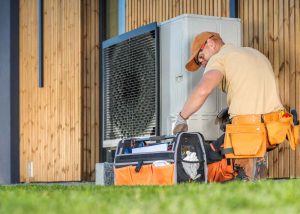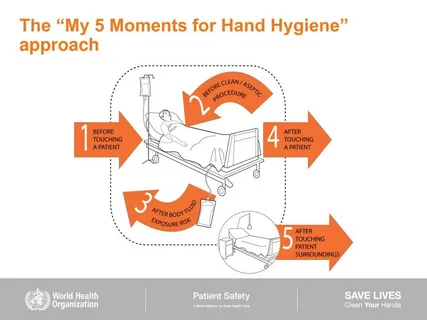When your home starts to feel chillier than usual, it’s natural to wonder whether your furnace just needs a quick fix—or if it’s time for a full replacement. Making the right choice can save you money, extend comfort, and even improve energy efficiency. Many homeowners struggle to know the difference between a simple repair and a more serious issue. The good news is that there are several warning signs that can guide your decision.
Some issues are minor and can be resolved affordably, while others point to deeper problems. Understanding what to look for will help you avoid unnecessary stress. Let’s break down the key signs and when they suggest a repair versus a replacement.
Sign #1: Age of Your Furnace
The age of your furnace plays a major role in deciding whether to repair or replace it. Most furnaces last around 15 to 20 years with proper maintenance. If your unit is nearing or has passed this range, replacement may be more cost-effective than frequent repairs. Older furnaces are also less energy efficient, meaning you’ll spend more on monthly bills.
However, if your furnace is under 10 years old and having its first major issue, a repair is likely the smarter move. Think of it like a car—if it’s old and always in the shop, it might be time to upgrade. But if it’s relatively new, repairs can still give you solid return on investment.
Sign #2: Frequent or Costly Repairs
If you’re calling a technician every few months, your furnace may be crying out for replacement. Frequent breakdowns not only cost more in the long run but can leave your home without heat when you need it most. A good rule of thumb is the “50% Rule”—if a repair cost is more than 50% of the price of a new furnace, replacement is worth considering.
Replacing parts like a heat exchanger or blower motor can add up quickly. Also, these repairs might only be masking deeper systemic issues. While some wear and tear is normal, constant fixes suggest your furnace’s best days are behind it. Think long-term—sometimes paying more upfront saves you from ongoing headaches.
Sign #3: Uneven Heating or Poor Airflow
Have you noticed certain rooms are colder than others, or that the airflow from vents has weakened? This could be a sign your furnace isn’t operating efficiently. Uneven heating often results from aging components, ductwork issues, or failing fans. While some of these can be repaired, persistent airflow problems in an older system usually indicate the need for an upgrade.
Inconsistent temperatures can also make your home less comfortable and increase energy use. If your furnace is newer, it’s worth having a technician inspect it for leaks or blockages. But if problems continue despite repairs, a replacement may be the smarter solution.
Sign #4: Rising Energy Bills
A sudden increase in your utility bills—especially during the heating season—could mean your furnace is working too hard. As furnaces age, their efficiency naturally declines, even with regular maintenance. This means more fuel is used to produce the same level of heat.
Some energy spikes can be caused by external factors, but a consistent rise points to furnace inefficiency. You might notice your system cycles on and off more frequently, or runs longer than usual. If tuning up the furnace doesn’t fix the problem, you may need to consider a newer, energy-efficient model. For guidance, you can always check the internet or click here for info on heating repair options before jumping into a full replacement. Taking the time to explore your choices can help you avoid unnecessary costs. Plus, understanding the condition of your system can lead to smarter, longer-lasting solutions.
Sign #5: Strange Noises and Odors
Furnaces naturally make some noise, but loud clanking, banging, or squealing isn’t normal. These sounds can indicate worn-out belts, motor issues, or even cracks in internal parts. Similarly, unusual smells—like a musty or burning odor—shouldn’t be ignored.
Although minor sounds or odors can be resolved with basic maintenance, persistent issues are a red flag. Noises and smells often signal mechanical failure or compromised safety. Especially in older units, strange behavior is a clear sign the furnace may be nearing the end of its life. If these symptoms don’t go away after a repair, it’s time to weigh the cost of replacing it.
Sign #6: Yellow Pilot Light or Carbon Monoxide Alerts
Your furnace’s pilot light should always burn blue. A yellow or flickering flame may signal a combustion issue or carbon monoxide risk. Likewise, if your carbon monoxide detector goes off or you notice symptoms like headaches or dizziness, evacuate and contact a professional immediately. These aren’t just repair-or-replace questions—they’re safety emergencies.
While some pilot light issues are fixable, consistent problems could suggest the unit is no longer safe to operate. Aging furnaces are more prone to these dangers due to rusting or cracked heat exchangers. In such cases, replacement isn’t just a convenience—it’s a necessity for your family’s health and safety.
Final Thoughts: Balancing Cost, Safety, and Comfort
Knowing when to repair versus replace your furnace comes down to weighing the age, cost of repairs, safety, and comfort levels. A newer system with occasional issues is usually worth repairing, especially if the fixes are affordable. But older furnaces with high repair bills or safety concerns often need to be replaced.
Keep track of repair history, utility costs, and performance changes so you can spot trends early. Don’t hesitate to call a trusted technician for a professional evaluation. Making an informed decision ensures you stay warm, safe, and stress-free all winter long.










